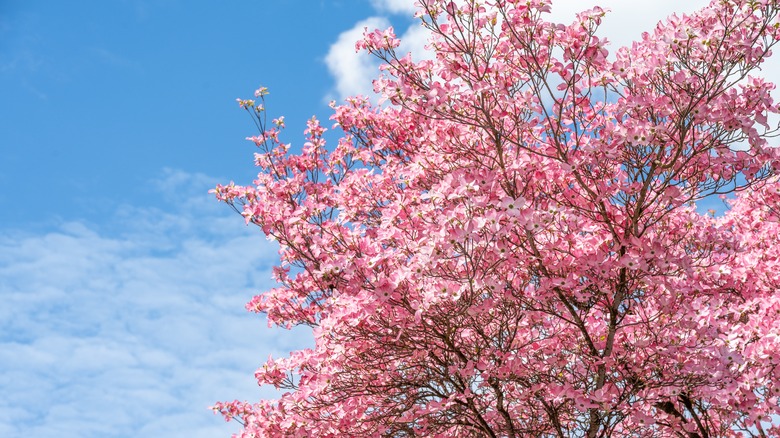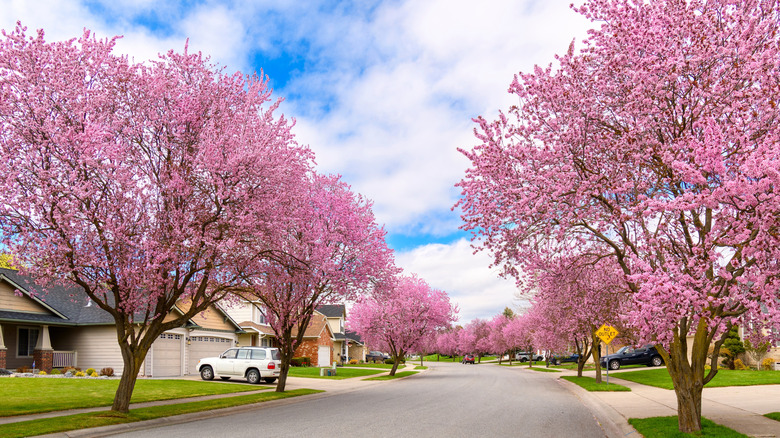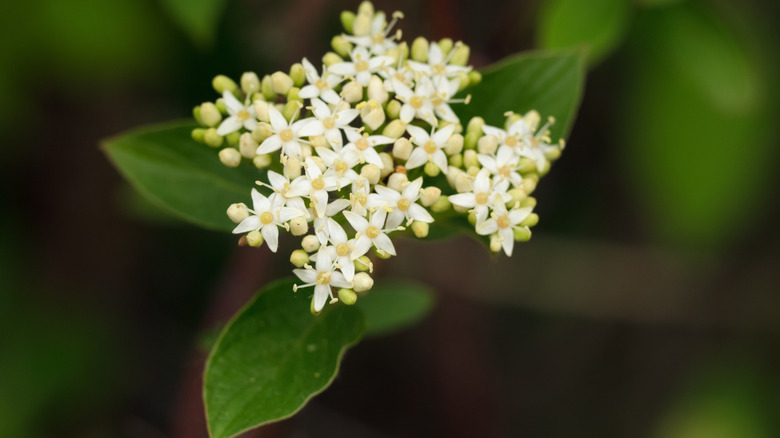The Problem With Dogwood Trees You Should Know Before Planting
Dogwood trees can be stunning additions to your yard. Not only do they have beautiful flowers, but they're extremely beneficial for pollinators like butterflies, bees, and birds. Many species, like the flowering dogwood, are even native to North America. But for all their benefits and wonderful qualities, there is one big downside to dogwood trees: their unpredictable height.
While flowering dogwood trees (Cornus florida) are generally considered small trees that supposedly won't grow past 25 feet, that is not always the case. Many factors, including light conditions, can result in some trees becoming far taller. In some situations, the tree that grows almost twice as tall as expected which can be a fun surprise ... but in other instances, such as near power lines or close to homes and other buildings, this can be a problem. Additionally, because the trees grow so slowly, it can be a challenge to decide how best to use them in the landscape. While they can grow as much as 2 feet a year in some cases, in many other situations their growth is closer to 1 foot a year.
Flowering dogwoods are often the first type of dogwoods that come to mind for people in North America. However, there are also a variety of other species of dogwoods, all with their own hardiness zones, growth habits, and bloom times. So make sure to check the dogwood varieties you're purchasing. Flowering dogwood is hardy in zones 5 through 9, though the time they blossom each year can vary significantly from zone to zone.
Factors that can impact the height of dogwood trees
One of the biggest causes of dogwood trees growing taller than expected is excessive shade. Many dogwood trees grow their best in full sun to part shade. With too much shade, not only do the trees tend to get taller and leggier, but their overall health is also impacted — and they may fail to bloom as well. They are also far more likely to succumb to fungal diseases without enough sun.
A flowering dogwood planted in shade can far exceed its expected height, and has the potential to grow as tall as 40 feet. And as they are relatively slow growing, it may take awhile to realize just how tall your dogwood is getting. Since trees that grow to 40 feet should be planted a minimum of 25 feet from power lines, their unpredictable height can significantly limit where you can consider growing a dogwood tree. Considering the challenges of cutting down trees near power lines, it's best to avoid planting a tree with the potential to outgrow its spot anywhere near them.
Alternatives to flowering dogwood trees
If you love flowering dogwoods because they are both beautiful and native to North America, but don't want to deal with a tree that has the potential to grow to 40 feet, you may want to instead consider their smaller and shrubbier relative: the red twig dogwood (Cornus sericea). Offering multi-season interest thanks to their red branches and delicate flowers, red twig dogwoods rarely exceed heights of 9 feet, making them a far more manageable plant to find space for than many of their larger relatives. As with larger dogwoods, they thrive in full to part sun. They are also extremely cold tolerant and are hardy in zones 2 through 7.
Another excellent native shrub, which can also be grown as a small tree, is the beautiful serviceberry (Amelanchier spp.). They also offer stunning spring blooms and don't grow past 25 feet, with many staying closer to 15 feet. Hardy in zones 4 through 9 and with a medium growth rate, they can be perfect alternatives to flowering dogwoods.


